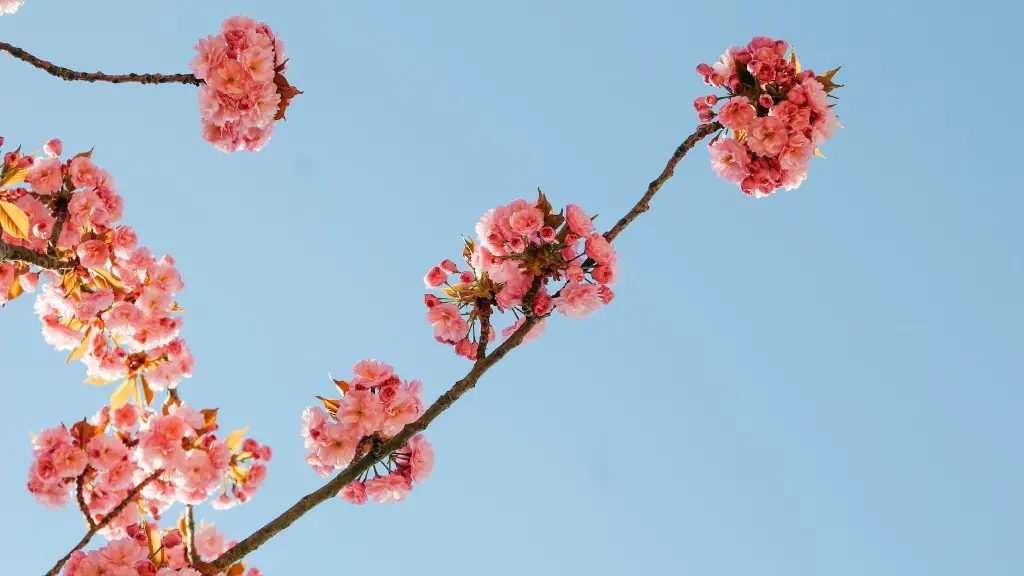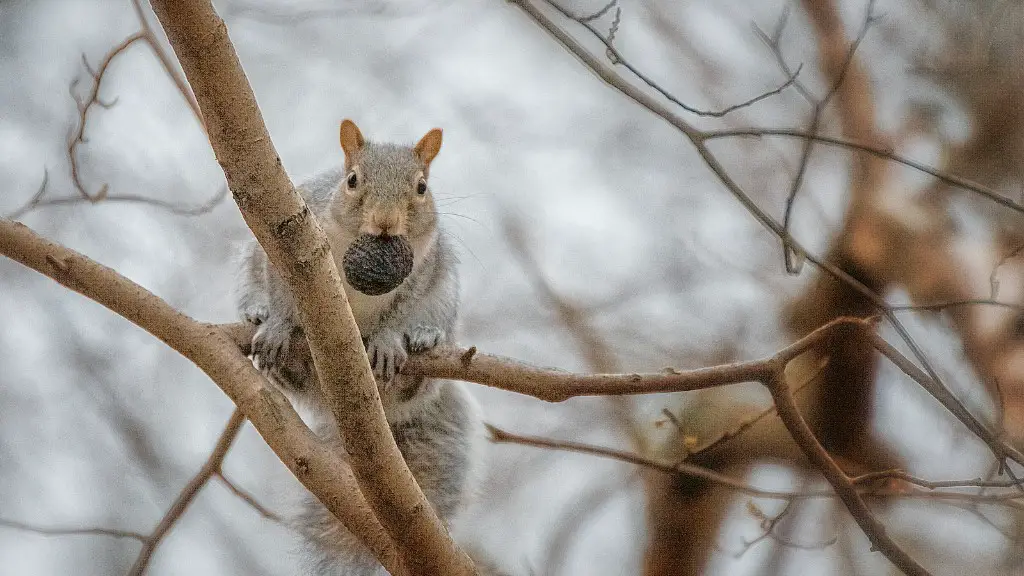Is my Cherry Blossom Tree Dead?
Cherry Blossom trees are a beautiful sight, with their delicate white petals floating gracefully in the breeze. However, one of your favorite trees may have suddenly turned brown, leaving you concerned and confused. Is your cherry blossom tree dead, or is there something you can do to save it?
The best way to answer this question is to consult an expert, so let’s consult an arborist. According to an arborist from the University of Maryland Extension Program, in order to determine if your cherry blossom tree is dead, it’s important to look at the signs of death. The first sign of death is a lack of leaf growth: dead trees will not grow any new leaves, and if your tree had no new spring buds, this could be a sign of death. Additionally, if the tree is covered in a white or gray powdery mildew, it’s likely dead. Finally, trees can also die due to drought, extreme temperatures, and a variety of other causes.
Unfortunately, many cherry blossom trees, particularly the younger ones, do not survive the winter. This is due to the fact that cherry blossoms blossoms only bloom for a period of weeks, and failed buds can lead to a weakened root system. Therefore, it’s important to take precautions to help your tree survive the winter.
It is recommended to water your cherry blossom tree during dry spells and to protect it from cold temperatures with a layer of mulch. Additionally, you should use fertilizer in order to give your tree the nutrients it needs to survive the harsh winter months. You should also prune dead branches, as they can spread disease or pests to other parts of your tree.
In some cases, the extreme cold and snow of winter can kill a cherry blossom tree. If your tree is showing signs of death and has been exposed to these conditions, it may already be dead. Therefore, it is important to be prepared for the worst and to come up with a plan to replace your tree if necessary.
Best Practices for Caring for Cherry Blossom Trees
Caring for cherry blossom trees really depends upon the individual species and the climate in which it is grown. To ensure the health and well-being of your tree, it is important to follow best practices for care.
Firstly, it is essential to deep-water the tree one to two times each week during its growing season. That being said, it is also important to be careful not to over-water. In addition, it is also recommended to prune the tree by removing dead branches and encouraging new growth. This can be done by shaping the tree, or removing dead branches or buds that may seem to coat the tree.
It is also important to fertilize the tree with organic fertilizers during the spring and summer months. The tree should also be covered in mulch during wintertime in order to protect the roots and provide insulation to the tree. The mulch should extend beyond the trunk four or five feet.
Finally, if the tree is located in a region that experiences extreme cold or snow, it is best to cover the tree in blankets or straw mulch to provide additional insulation.
Identifying Pests and Diseases
Unfortunately, pests and diseases can be a major issue for cherry blossom trees and should be identified as soon as possible. These pests can include insects such as aphids and scale insects, fungal diseases, and even rodents.
Aphids are the most common pest and are visible as small white bugs on the underside of leaves. These pests feed off of new growth and can stunt the tree’s growth. Therefore, it is important to identify and remove these pests as soon as possible.
Fungal diseases can also be a major issue for cherry blossom trees and can be identified by spotting white or gray powdery mildew on the leaves and branches. These fungi should be treated with a fungicide as soon as possible.
Finally, rodents such as rats and mice can also be an issue for cherry blossom trees and should be discouraged by trying natural repellents such as peppermint oil or garlic extract.
Treatment Options for Cherry Blossom Tree Diseases
Once a cherry blossom tree has been identified as being infected with a disease, it can be treated with a range of different treatment options. Fungicides are the most common treatment and should be used as soon as possible in order to prevent the spread of the disease. Additionally, the tree should also be pruned and trimmed to reduce the spread of the disease and to encourage new growth.
In addition, fertilizers can also be used to encourage new growth. Organic fertilizers such as seaweed extract or fish emulsion are often recommended as they are rich in essential nutrients and minerals. Finally, it is also recommended to use a soil amendment such as lime or manure to ensure the soil is well-drained.
When is it Appropriate to Replace a Cherry Blossom Tree?
If your cherry blossom tree has been damaged beyond repair, or if it has been infected with a disease that cannot be treated, it may be time to consider replacing the tree. In most cases, if the tree has been weakened by disease or environmental factors, it is best to replace it with a new tree.
When searching for a replacement tree, it is important to find a tree that is suited to your climate and environment. Additionally, it is important to purchase the tree from a trusted tree farm or nursery where the trees have been nurtured and cared for.
Finally, it is important to be aware that cherry blossom trees can be fragile, and extreme conditions such as cold and snow can easily damage or kill the tree. Therefore, it is important to take precautions to protect the tree and its surrounding environment in order to ensure its long-term health and success.
When to Plant a New Cherry Blossom Tree?
The best time to plant a new cherry blossom tree is during the spring season when the weather is warm and the soil is moist. Generally, the tree should be planted between April and May. This is the best time to plant the tree as the conditions are perfect for root growth and development.
When it comes to where to plant the tree, it is important to select a location that receives no less than six to eight hours of sun each day. In addition, it is important to pay close attention to the soil quality and drainage. It is also important to ensure that the soil is nutritionally enriched and well-aerated.
Finally, it is important to water the newly planted tree correctly and ensure it is protected from pests and diseases. A light fertilization and mulch can be applied to protect the tree’s roots and to improve the soil quality.
Final Steps for Saving a Cherry Blossom Tree
The final steps for saving a cherry blossom tree are to treat any existing damage, to prune dead or diseased branches, and to provide protection from pests and extreme temperatures.
It is important to treat any damage as soon as possible in order to give the tree the best chance of survival. Pruning or removing dead branches is also important in order to prevent the spread of disease and encourage new growth. Additionally, applying mulch and blankets can help insulate the tree during the winter months and protect its roots.
Finally, pest and fungal control is important for saving a cherry blossom tree. It is important to use natural repellents such as garlic extract or peppermint oil, and to treat any existing fungi as soon as possible. Fungicides can also be used to prevent the spread of fungi.

